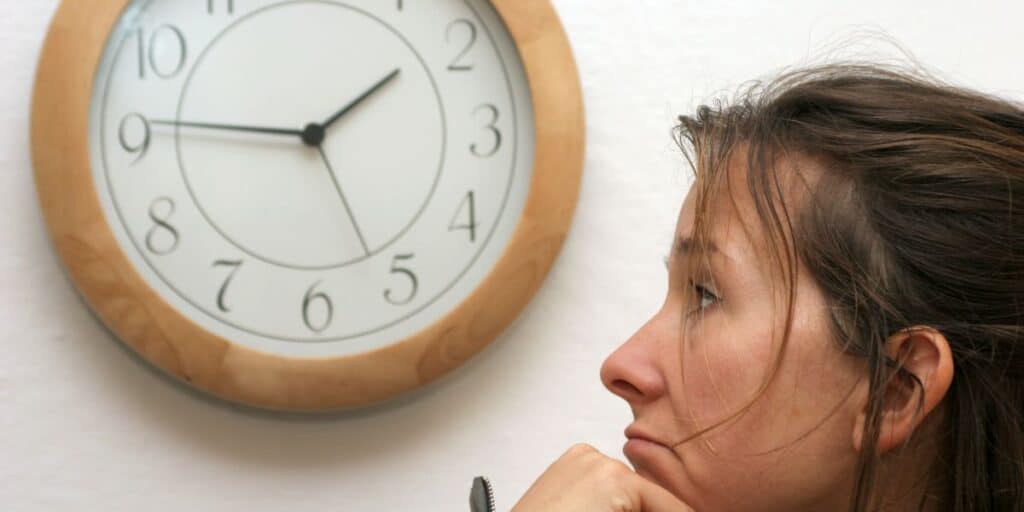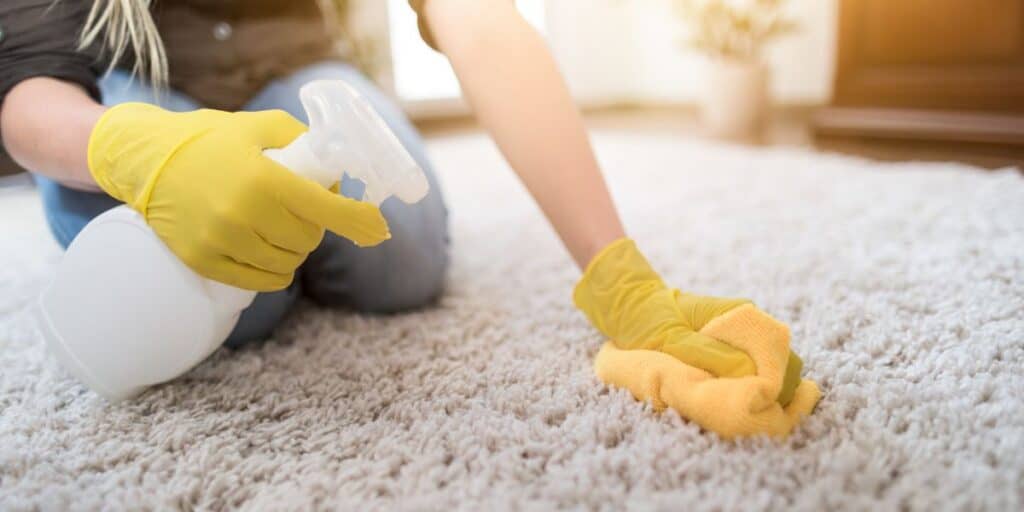Carpet cleaning is a necessary task for maintaining a clean and healthy home environment. But have you ever wondered how long it takes for your carpet to dry after a thorough cleaning? This is an important question, as walking on wet carpet can lead to damage and re-soiling. Let’s dive into this topic and provide you with the insights you need.
It can take between 2 to 24 hours for a carpet to completely dry after cleaning. The exact drying time after carpet cleaning varies based on the cleaning method, the carpet type, humidity, and ventilation. Knowing these factors can help plan a carpet cleaning routine and avoid inconvenience.
In the following sections of this article, we will discuss the different factors that impact drying time, various carpet cleaning methods, and their respective drying rates, as well as tips for speeding up the drying process. By the end of this article, you will have a comprehensive understanding of how long carpet cleaning takes to dry and what you can do to hasten the process.

Importance of Carpet Drying After Cleaning
Proper drying of your carpet after cleaning is essential for maintaining its appearance and ensuring a healthy indoor environment. There are several factors that influence drying time, such as moisture, humidity, temperature, and the type of carpet material. But, before diving anyt further into those, let’s first explore why carpet drying is crucial and the potential problems that can arise if your carpet isn’t dried thoroughly.
In summary, here’s why proper carpet drying is essential:
- Minimizes the risk of mold and mildew growth
- Prevents unpleasant odors
- Maintains carpet appearance and prolongs its lifespan
- Ensures a healthy indoor environment
By paying attention to factors like moisture, humidity, and temperature, you can ensure a quicker and more efficient drying process after cleaning your carpet. Remember, keeping your carpet dry is crucial for both its appearance and your overall health.
Factors Affecting Drying Time
When it comes to carpet cleaning, the drying time can vary depending on several factors. In this section, we’ll explore some of the key aspects that influence how long it takes for your carpets to dry, including the type of carpet, the cleaning method used, and the environment.
Type of Carpet
Different types of carpets have diverse materials and thicknesses, which can affect how long they take to dry.
- Natural fibers (such as wool, cotton, or silk) tend to absorb more water and may take longer to dry.
- Synthetic fibers (such as nylon, polyester, or polypropylene) usually dry more quickly because they don’t absorb as much water.
Also, the pile height and density of your carpet can play a role in the drying process; a thicker, denser carpet might require longer drying times.
Cleaning Method
There are various carpet cleaning methods, each with different drying times. Two common methods are steam cleaning and dry cleaning.
- Steam cleaning uses hot water extraction to remove dirt and debris from your carpet. While this method is effective at cleaning deep down, it can leave carpets damp for a longer period, typically taking around 6-12 hours to dry.
- Dry cleaning uses chemicals and small amounts of water to break down dirt particles in the carpet. Since there’s minimal water involved, this method dries faster than steam cleaning, generally taking around 1-4 hours.
Environment
Environmental factors can also impact the drying time of your carpets. Several factors to consider include:
- Humidity: Higher humidity can slow down the drying process since the air is already holding water vapor, making it harder for the moisture to evaporate from your carpet.
- Temperature: Colder temperatures may extend the drying time, while warmer temperatures can help speed it up.
- Air circulation: Proper air circulation can help moisture evaporate more quickly. Using fans or opening windows can aid in faster carpet drying.
By understanding the factors that affect drying time, you can better estimate how long it might take for your carpets to dry after cleaning. Keep in mind that individual circumstances vary, but taking proper steps, such as choosing the right cleaning method for your carpet and ensuring proper ventilation, can help you enjoy clean, dry carpets more quickly.
Carpet Cleaning Methods and Estimated Drying Time
In this section, we’ll provide an overview of various carpet cleaning methods and their estimated drying times. These methods include Steam Cleaning, Dry Cleaning, Hot Water Extraction, and Encapsulation. We’ll also discuss their respective pros and cons to help you make an informed decision about which method is best for your needs.
Steam Cleaning
Steam cleaning, also known as hot water extraction, involves spraying hot water and a cleaning solution onto the carpet, followed by vacuuming up the water and debris. The estimated drying time for this method can range from 2 to 24 hours, depending on factors like humidity, ventilation, and the type of carpet.
Advantages of steam cleaning:
- Deep cleaning
- Effective at removing dirt, allergens, and bacteria
- Suitable for most carpet types
Disadvantages:
- Longer drying times
- Risk of mold and mildew if not properly dried
Dry Cleaning
Dry cleaning utilizes a small amount of water along with absorbent compounds and solvents to break down dirt and stains. The carpet is then vacuumed to remove the cleaning compound and debris. This method typically has a shorter drying time of around 1 to 2 hours.
Benefits of dry cleaning:
- Shorter drying times
- Less potential for mold or mildew growth
Drawbacks:
- May not be as effective at removing deep-seated dirt
- Some chemicals used may be harsh
Hot Water Extraction
Hot water extraction is similar to steam cleaning, but with a lower water temperature. This method uses a combination of hot water, a cleaning agent, and powerful suction to extract dirt from the carpet. The estimated drying time for hot water extraction is about 4 to 6 hours.
Pros:
- Relatively fast turnaround
- Effective at removing various types of dirt and stains
Cons:
- Potential for moisture-related issues if not adequately dried
Encapsulation
Encapsulation is a low-moisture carpet cleaning method that involves applying a crystallizing polymer to the carpet, which traps and bonds with the dirt. As the polymer dries, it can be vacuumed along with the trapped dirt. Encapsulation typically has a drying time of 1 to 2 hours.
Advantages:
- Minimal water use
- Quick drying time
- Low risk of moisture-related problems
Disadvantages:
- May not be as effective for heavily soiled carpets
- May require more frequent cleaning
| Method | Estimated Drying Time | Pros | Cons |
|---|---|---|---|
| Steam Cleaning | 2-24 hours | Deep cleaning, effective at removing dirt/allergens, suitable for most carpets | Longer drying times, risk of mold/mildew if not dried properly |
| Dry Cleaning | 1-2 hours | Shorter drying times, less potential for mold/mildew | May not be as effective at removing deep-seated dirt, harsh chemicals |
| Hot Water Extraction | 4-6 hours | Fast turnaround, effective at removing various types of dirt/stains | Potential moisture-related issues if not adequately dried |
| Encapsulation | 1-2 hours | Minimal water use, quick drying time, low risk of moisture-related issues | May not be as effective for heavily soiled carpets, more frequent cleaning may be needed |
By understanding each carpet cleaning method and their associated drying times, you can make a well-informed decision about the best approach for your specific needs.
Techniques to Speed Up Drying Time
Drying time is an important concern for most people on the subject of carpet cleaning, but there are steps that you can take to speed up the drying process. In this section, we’ll discuss proper airflow and ventilation, the use of dehumidifiers, and carpet pile management.
Proper Airflow and Ventilation
Creating good airflow is essential for faster drying times. Here are some ways to improve air circulation:
- Open windows: Allow fresh air to enter the room, aiding the drying process.
- Use floor fans: Position fans across the carpet to increase air circulation and speed up drying.
Make sure to keep doors open, allowing air to circulate throughout the entire space.
Use of Dehumidifiers
Another effective way to dry carpets quickly is using a dehumidifier. This device:
- Removes excess moisture from the air
- Creates a drier environment
- Accelerates the drying process
Consider using a dehumidifier in conjunction with floor fans for even faster results.
Carpet Pile Management
Finally, the way you manage your carpet pile can also affect drying time. To ensure your carpet dries quickly:
- Gently rake the carpet fibers: This promotes air circulation, helping the fibers dry evenly.
- Avoid walking on the carpet: Your footsteps may mat the fibers down, impeding airflow and lengthening drying time.
By following these simple techniques, you’ll be able to significantly reduce the time it takes for your carpet to dry after cleaning. Remember to focus on airflow, use a dehumidifier if needed, and properly manage your carpet pile to achieve the best results.
Why Choose Professional Carpet Cleaning?
Professional carpet cleaning services offer numerous advantages over attempting to clean the carpets yourself. Let’s explore some of the key reasons to consider hiring a professional carpet cleaner:
- Expertise and equipment: Professional cleaners have the necessary experience and equipment to effectively clean and remove various types of dirt and stains. They use powerful machines and high-quality cleaning products, ensuring your carpets are deeply cleaned and sanitized.
- Time-saving: Cleaning your carpets can be a time-consuming task, especially if you’re unsure of the best methods and products. By hiring a carpet cleaning service, you can save time and focus on other aspects of your busy life.
- Longevity: Regular professional cleanings can extend the life of your carpets, as they can prevent the buildup of dirt and harmful allergens. This ensures your carpets stay fresh and maintain their appearance for a longer period.
- Health benefits: Clean carpets contribute to a healthier living environment by reducing allergens, bacteria, and pollutants. Professional carpet cleaning services effectively remove these contaminants, helping to improve the air quality in your home.
- Customized solutions: Professional cleaners offer tailored cleaning plans that suit the specific needs of your carpets. They will assess the condition of your carpets and recommend the best cleaning method, whether it’s steam cleaning, dry cleaning, or another technique.
Some additional factors to consider when choosing a professional carpet cleaning service:
- Cost: The cost of professional carpet cleaning can vary depending on factors such as the size of your home, the type of carpet, and the level of cleaning required. However, many services offer competitive prices and the long-term benefits can outweigh the initial investment.
- Commercial cleaning: For businesses and commercial properties, hiring a professional carpet cleaner is essential to maintain a clean and presentable environment. Commercial cleaning services specialize in handling larger spaces and are equipped to deal with the specific needs of commercial carpets.
In conclusion, choosing a professional carpet cleaning service is a wise decision that offers numerous benefits in terms of appearance, cleanliness, and longevity of your carpets. Make sure to compare various services and their offerings to find the one that best meets your needs.
Carpet Maintenance and Longevity
Regular carpet maintenance is essential to extend the life of your carpet and keep it looking fresh. Here are some essential tips to help you maintain a beautiful and durable carpet:
- Vacuum frequently: Make sure to vacuum your carpet at least once a week to remove dirt, dust, and debris. High traffic areas may require more frequent vacuuming to prevent dirt accumulation and potential stains.
- Tend to spills immediately: When spills occur, blot them right away to avoid stains from setting in. Use a clean, dry cloth or paper towel to dab the spill gently, working from the outer edges towards the center.
- Move furniture occasionally: To help minimize wear and tear on your carpet, reposition your furniture occasionally. This practice will not only prevent excessive wear on certain areas but also promote even distribution of dirt and debris across the entire surface.
- Consider professional cleaning: Have your carpet professionally cleaned every 12 to 18 months to remove deep-seated dirt and stubborn stains. This will ensure your carpet remains fresh and adds to its longevity.
Here’s how to ensure your carpet dries quickly after cleaning:
- Use appropriate equipment: If you’re using a carpet cleaning machine, make sure it has adequate suction power to extract as much water as possible. The less water left behind, the faster the drying process.
- Ventilate the area: Open windows and doors to promote air circulation and aid in the evaporation of moisture from your carpet. You can also use fans or air conditioners to expedite the process.
- Avoid walking on the carpet: Steer clear of the damp carpet for as long as possible, allowing it to completely dry before resuming foot traffic. This will prevent any additional dirt from being tracked onto the carpet during the drying process.
By following these tips, you’ll ensure that your carpet remains clean, dry, and ready for use in no time. Remember, proper carpet maintenance prolongs its lifespan and keeps it looking fresh and inviting for years to come.
DIY Carpet Cleaning Solutions

Vinegar is a popular and natural ingredient in homemade carpet cleaning solutions. It has antimicrobial properties, making it perfect for removing stains and odors. Here’s a simple recipe to create your own vinegar-based carpet cleaner:
- Mix equal parts of white vinegar and water in a spray bottle
- Add a few drops of mild dish soap
- Shake well to combine
When using this cleaning solution, you can follow these steps:
- Vacuum your carpet thoroughly to remove any dust and debris
- Spray the vinegar mixture generously onto the stain or dirty area
- Let it sit for a few minutes to penetrate the fibers
- Blot the area with a clean cloth or sponge, working from the outside in
- Rinse with cold water and blot again to remove any remaining solution
Another option for a DIY carpet cleaning solution involves baking soda and water:
- Combine 1 cup of baking soda with 1 cup of warm water
- Mix until a paste-like consistency forms
To use this solution, you can:
- Apply the baking soda paste directly onto the stain
- Allow it to sit for 15-20 minutes
- Gently scrub the area with a brush or cloth
- Vacuum the dried paste away and repeat if necessary
Remember, when using any homemade cleaning solutions, test on a small, inconspicuous area of your carpet first to ensure it won’t cause any discoloration or damage.
Carpet drying time typically depends on various factors, such as the carpet’s thickness, the cleaning method used, and the room’s humidity. In general, carpets may take anywhere from 6-12 hours to dry when using homemade cleaning solutions. However, it’s essential to ensure your carpet is thoroughly dry before placing furniture back to avoid mold or mildew growth. Consider opening windows or using fans to help speed up the drying process.
Conclusion
After researching and assessing various factors, it’s clear that the time it takes for a carpet to dry after cleaning can vary. Several elements influence the drying time, such as:
- The type of carpet cleaning method used
- The humidity and temperature in the room
- The air circulation and ventilation within the space
For instance, some professional carpet cleaning methods, like hot water extraction or steam cleaning, might take longer to dry due to the amount of water used. In contrast, methods like dry cleaning or encapsulation utilize less moisture, resulting in quicker drying times.
To help speed up the drying process, you can:
- Increase air circulation by turning on fans or opening windows
- Use a dehumidifier to reduce moisture levels in the room
- Lift and separate the carpet fibers using a carpet rake
However, it’s crucial to avoid walking on the carpet until it’s completely dry to prevent dirt accumulation and damage to the fibers. Typically, carpets should dry within 6-12 hours after professional cleaning, but it could take up to 24 hours in some cases.
By understanding these factors and taking necessary precautions during the drying process, you can ensure your carpet remains fresh, clean, and in excellent condition.
Frequently Asked Questions
How soon can I put furniture back after carpet cleaning?
Typically, it’s best to wait 24 hours before placing furniture back onto freshly cleaned carpets. This allows ample time for the carpet to dry completely, preventing any damage to the furniture or carpet itself.
When can I walk on carpet post cleaning?
You can walk on your carpet after cleaning once it feels dry to the touch, which usually takes between 6 and 12 hours. However, it’s advisable to wear clean, indoor-only shoes or socks to minimize dirt transfer.
What speeds up carpet drying after cleaning?
- Increase ventilation by opening windows and doors
- Turn on fans to circulate air
- Use a dehumidifier to reduce humidity
- Choose a professional carpet cleaner who uses high-quality equipment for faster-drying results
How fast does professional carpet cleaning dry?
Carpets cleaned by professionals typically dry within 6 to 12 hours. High-quality equipment and techniques, such as hot water extraction, contribute to quicker drying times.
How soon does carpet dry with rug doctor?
A carpet cleaned using a Rug Doctor will most likely dry within 4 to 8 hours. However, this timeframe may vary depending on factors like room temperature, humidity, and carpet thickness.
What is the drying time for Hoover cleaned carpets?
When using a Hoover carpet cleaner, your carpets should be dry within 6 to 12 hours. Like other methods, drying time may be influenced by factors such as temperature, humidity, and carpet material.
